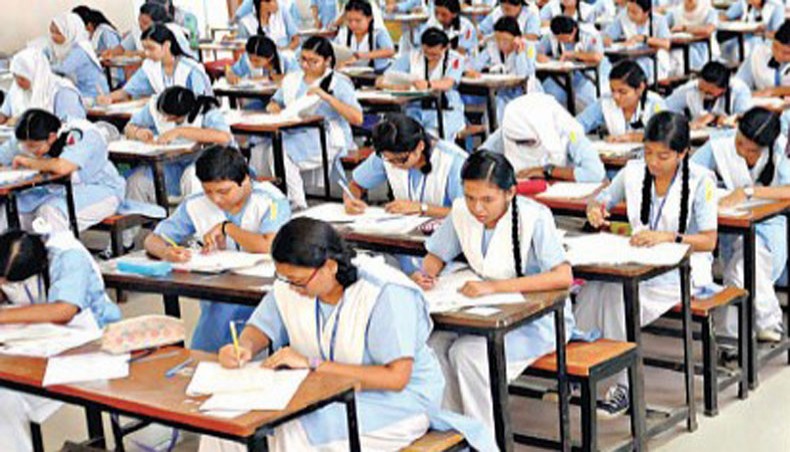Teaching time at staggered or double-shift primary schools has decreased further when the annual school contact hour is already lower than the global average, affecting quality of basic education of millions.
Teaching time at schools shrinks further due to the teachers’ lateness and absenteeism, teaching post vacancy and others, educationists have pointed out.
Decreasing teaching time at double-shift schools that account for 85 per cent of total new and old government primary schools is hampering interaction between the teachers and the students as well as compromising the quality of basic education of millions of students.
Former director of Dhaka University Institute of Education and Research Professor Siddiqur Rahman, who led the team which developed the current curriculum, and BRAC University’s Institute of Educational Development professor emeritus Manzoor Ahmed both find that decreasing of teaching time at primary school ‘alarming’.
Bangladesh Economic Survey 2017 shows that school contact hour at staggered primary schools for students of Class III to Class V stood at 791 hours in a year.
The same survey in 2016 said that school contact hour for the same level of student was 833 hours in a year.
As per both the surveys, teaching time for Class I and II is 600 hours while the international standard recommends 1,000 hours of teaching time at primary level.
According to Directorate of Primary Education, about 85 per cent or 54,406 new and old government primary schools are now staggered schools having double shift.
DPE top officials as well as experts are sceptical about 791-hour teaching time as they say the figure may be in paper but actually, they fear, it is much lower if someone takes into consideration issues like unscheduled closure of academic activities during flood and others natural calamities, political instability, teachers’ lateness and absenteeism and their scheduled and unscheduled leaves.
They also blame overcrowded classroom and teaching post vacancy for this decreasing effective school contact hour.
‘As the teachers get less time, they want to complete the syllabus hurriedly; they sometimes skip teaching a chapter or two,’ said Siddiqur.
‘As a result, dependence on coaching and guidebook is still strong in the country as guardians feel that their children’s education remains incomplete at classrooms,’ he said.
Both Siddiqur and Manzoor are of the opinion that less contact hour at crowded classroom, with absent and late teachers, is creating less competent primary students. ‘It also hampers quality of education at class room,’ said Manzoor.
DPE director general Abu Hena Mostofa Kamal has also noticed that class contact hour in double shift is decreasing for different reasons.
‘We are also concerned, as school contact hour is already lower than global level,’ he said.
‘In order to increase school contact hour, we are trying to turn double shift schools to single shift and for that we are creating 65,000 new class rooms,’ he informed.
Effective class contact hour was much lower than the 791 hours in a year because of teacher absenteeism, their lateness, vacant teaching positions as well as unscheduled closure of schools, said Manzoor.
Campaign for Popular Education 2015 survey report found that 12.7 per cent teachers of the old government primary schools and 11.3 per cent of the new ones were absent on the day of the school visit in 2014 for various reasons such as attending training, maternity or sick leave and unauthorised leaves.
Regarding teacher lateness, a 2012/13 CAMPE survey found that 43.4 per cent teachers of new and 44 per cent of old government schools arrived late at school and the average delay of these teachers was between 30 and 50 minutes.
DPE sources said that over 45,000 teaching positions at the government primary school was now vacant.
The combination of these factors affecting the contact hours shows the complexity of the challenge in reaching the actual contact hour calculation said Manzoor.
‘On many occasions, a teacher needs to impart education to 50/ 60 students or even 100 students in a classroom. It is difficult for them to use his contact hour effectively while teaching at classroom,’ he explained.
Teachers’ absenteeism and lateness has decreased significantly, claimed the DPE director general, adding that they would take action if they would find any specific allegations in this regard.
He said that government was recruiting new teachers and had a plan to recruit more teachers in order to increase school contact hour.
Source: New Age

